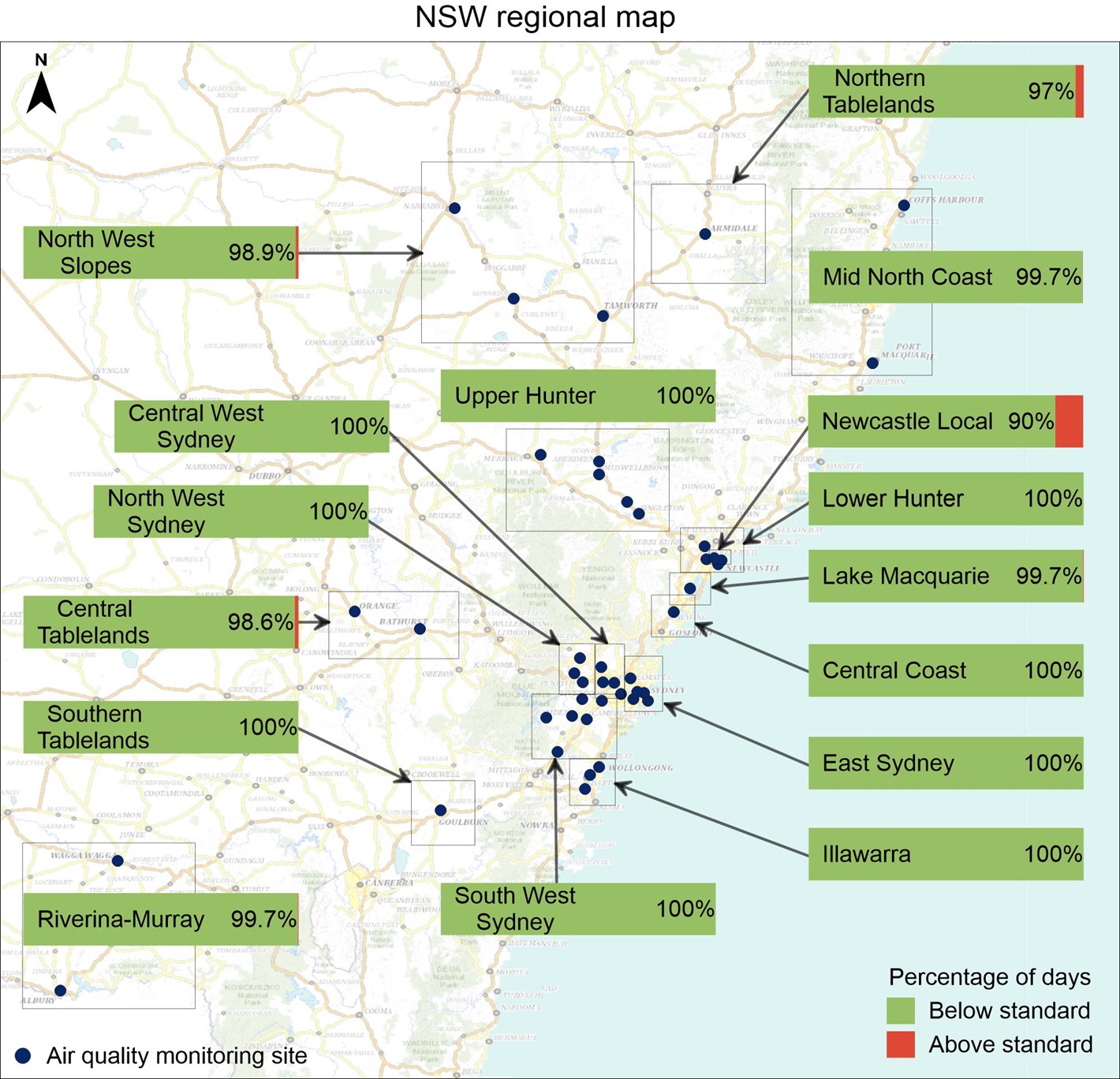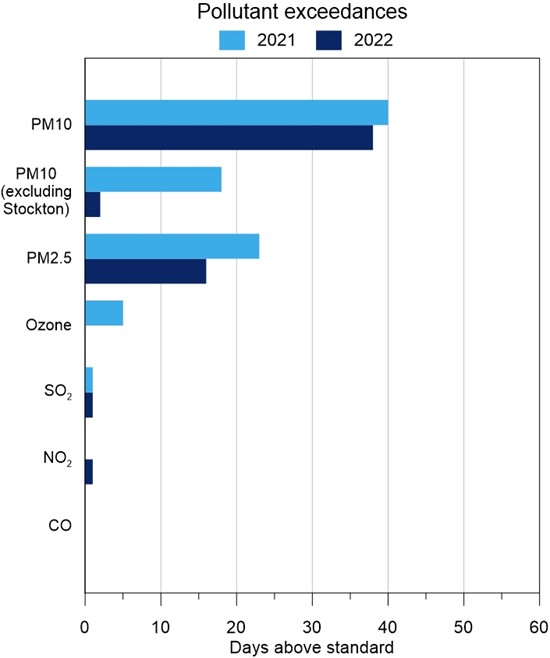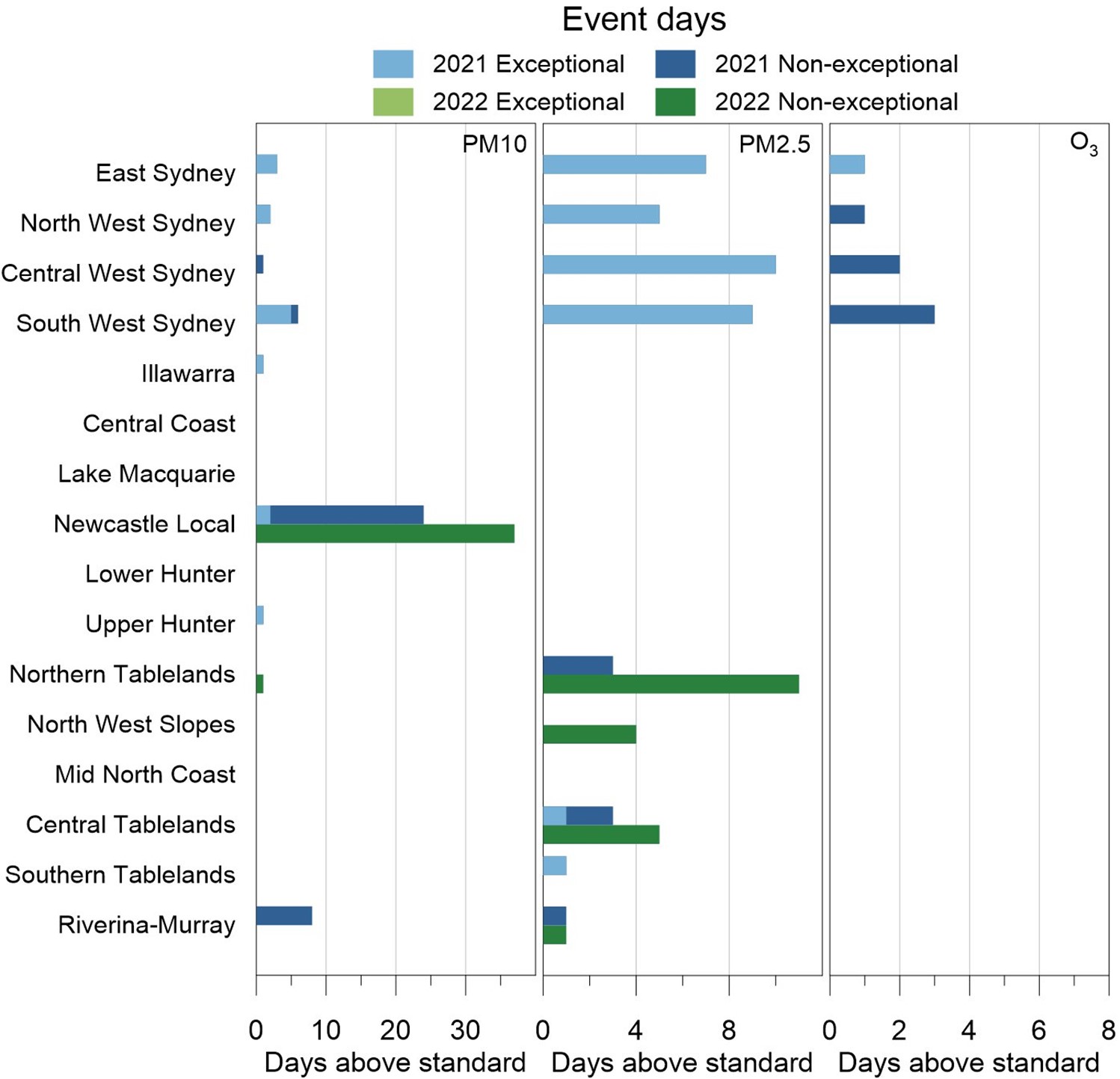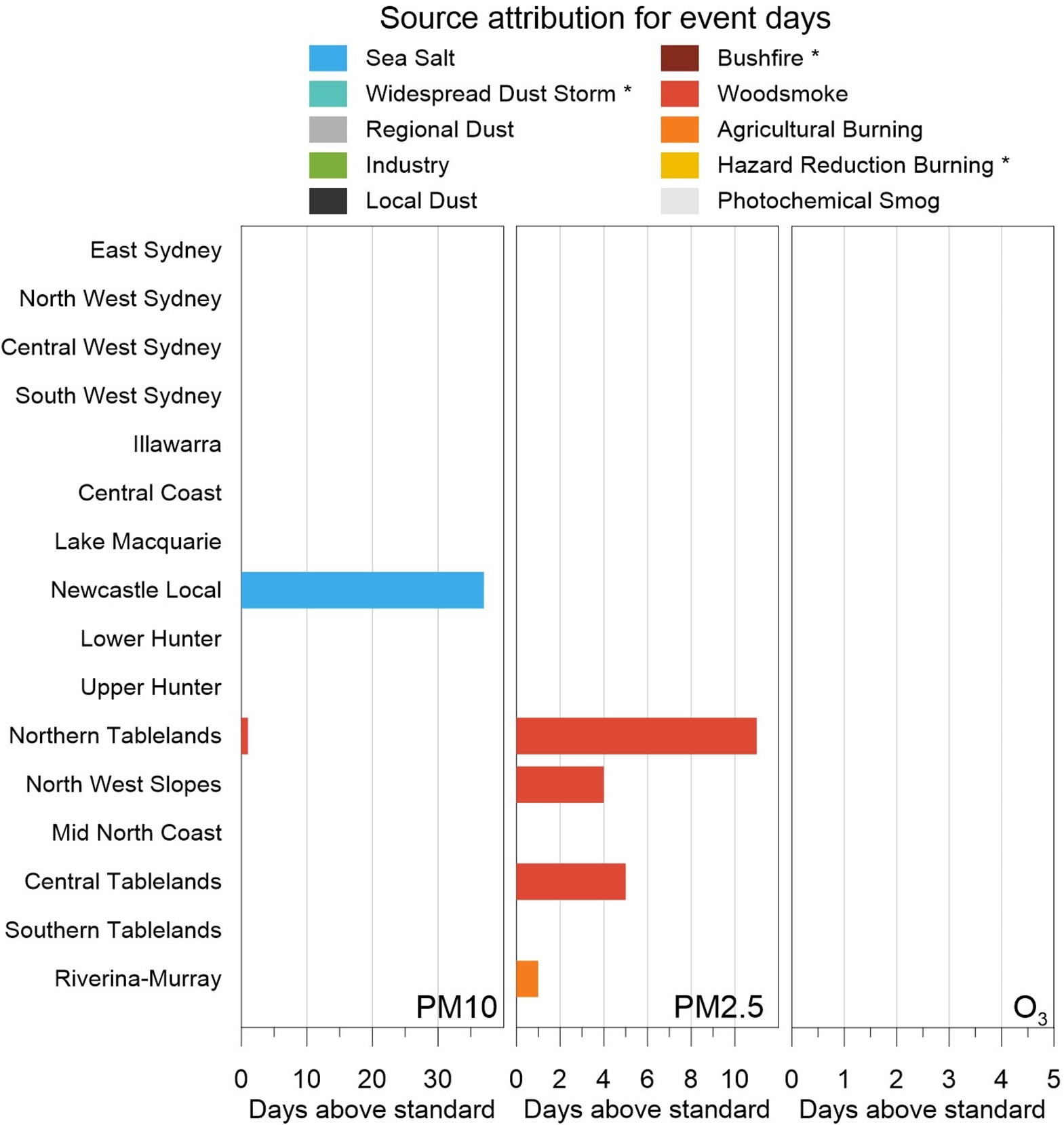In 2022, pollutant levels were within national standards 100% of the time in 9 of 16 NSW regions, including all the Sydney regions and the Illawarra, Central Coast, Lower Hunter, Upper Hunter population centres and Southern Tablelands (see NSW regional map). This is an improvement compared to 2021, when there were 4 regions where pollutant levels were within the standards 100% of the time.
The Northern Tablelands, Lake Macquarie, Riverina-Murray, Central Tablelands, North West Slopes and Mid North Coast regions, recorded levels within the national standards between 97.0% and 99.7% of the time.
The industry-funded Newcastle local network recorded levels within the standard 90% of time. This was primarily caused by sea salt spray raising PM10 levels at Stockton due to its proximity to the coast, particularly in the warmer months.

NSW regional map
Map with bar charts (shown in green), showing the percentage of days that pollutant levels in different regions were below air quality standards. The percentage of days in each region that pollutant levels were above the standards are shown in red.




